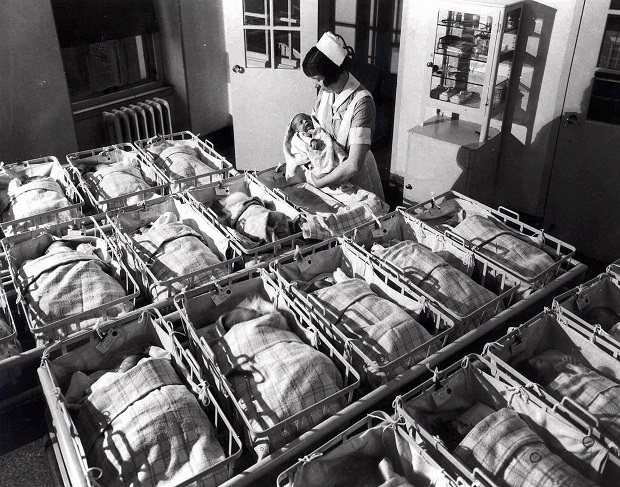Sexes equal at conception—study

In this 1930, file photo, a nurse holds a baby in the nursery of the Pennsylvania Hospital in Philadelphia. Every year, slightly more boy babies than girl babies are born. But back when sperm meets egg, the two sexes are conceived in equal numbers, according to a new study released on Monday, March 30, 2015. AP
NEW YORK — Every year, slightly more boy babies than girl babies are born worldwide. But back when sperm meets egg, the two sexes are conceived in equal numbers, a new study suggests.
That contradicts the idea found in many textbooks and scientific articles that males are in the majority at conception, researchers said.
And it implies more females than males die before birth, resulting in the excess of male births, says Steven Orzack, a study author.
“We don’t have good information on the cause of this difference,” he said.
Male-female ratio
The work, released Monday by the Proceedings of the National Academy of Sciences, also estimates the ratio of males to females at various points in pregnancy. It finds a see-sawing pattern over that time in which sex is more prone to die in the womb, as various genetic influences take their toll.
“We’re gaining fundamental new insights in the biology of humans in the first nine months of life,” Orzack said.
That biology “unfolds differently, starting soon after conception, between boys and girls,” he said.
Orzack is president of the nonprofit Fresh Pond Research Institute in Cambridge, Massachusetts. He reports the work with scientists from Harvard and Oxford universities and elsewhere.
Natural selection
In general, around 105 boys are born for every 100 girls worldwide. The imbalance, first noticed centuries ago, is a natural phenomenon not due to selective abortion of girls in some areas.
The study authors drew on a variety of sources for information on the male-female ratio throughout pregnancy, including abortions, genetic sampling of fetuses in the womb, and fetal deaths.
To estimate the sex ratio at conception, they examined data on nearly 140,000 embryos that had been routinely screened at fertility clinics in the United States and elsewhere for genetic problems.
Virtually 50-50
The embryos were 3 to 6 days old. Analysis concluded that by that point, the sex breakdown was virtually 50-50. So extrapolating backward, “the best evidence we have is that the sex ratio at conception is even,” Orzack said.
The fertility-clinic data provide the best available stand-in for what happens in natural conception, the authors said; their analysis shows those two ways of conceiving produce identical sex ratios for babies at birth.
RELATED STORIES
PH best in gender equality in Asia-Pacific